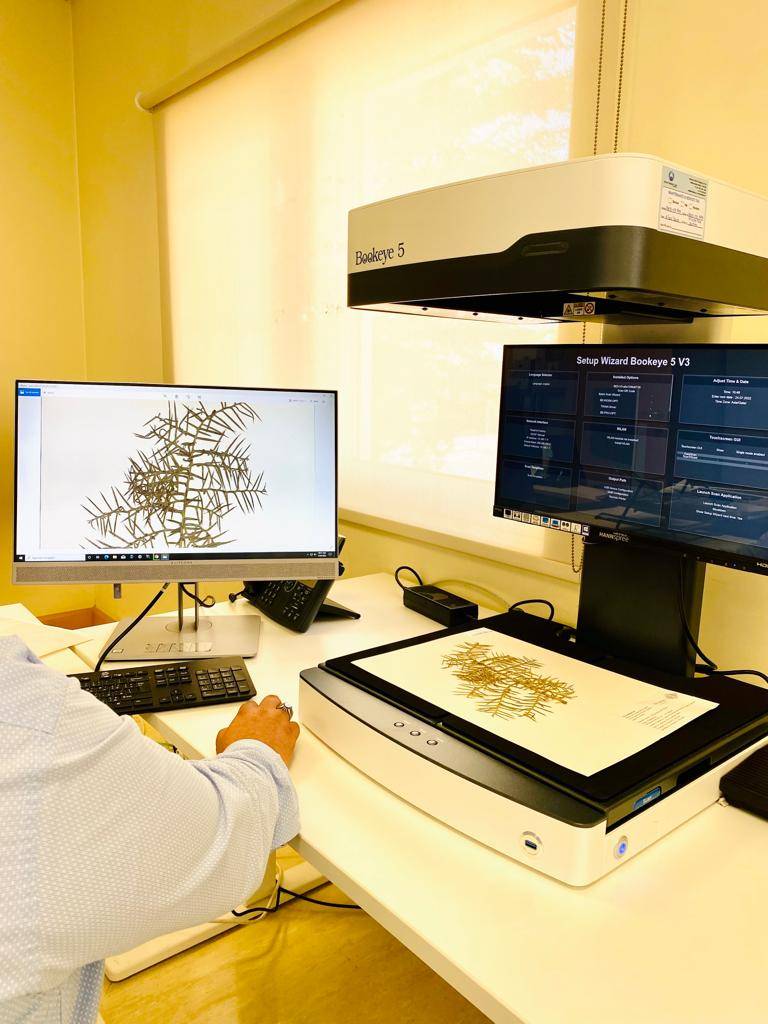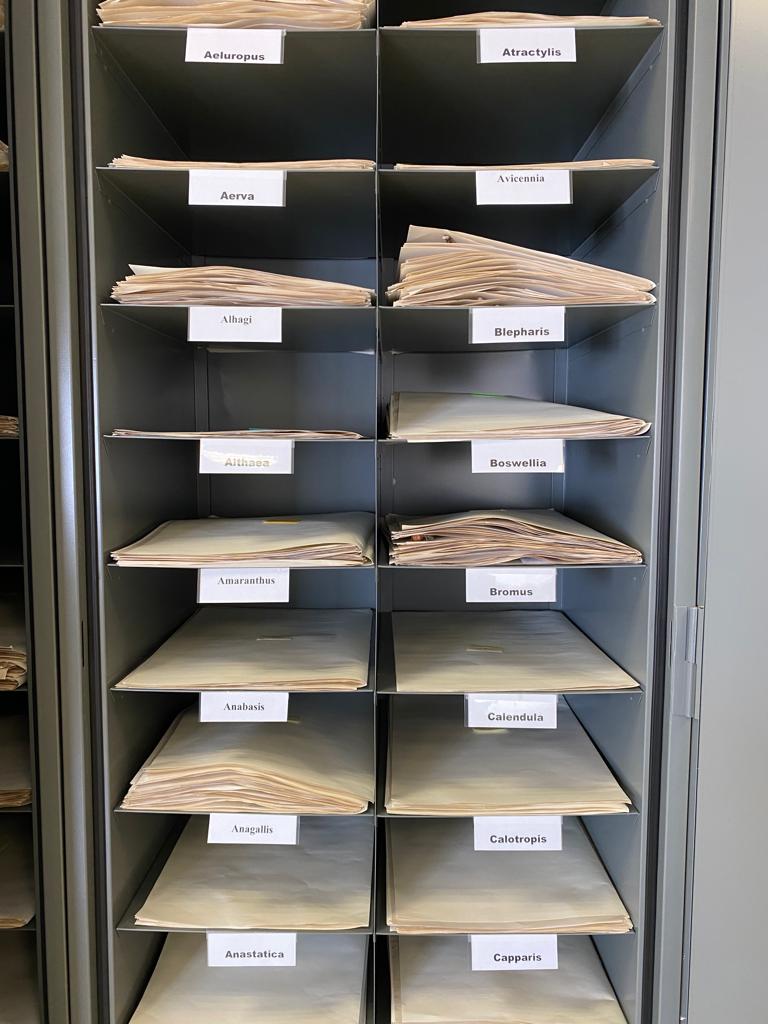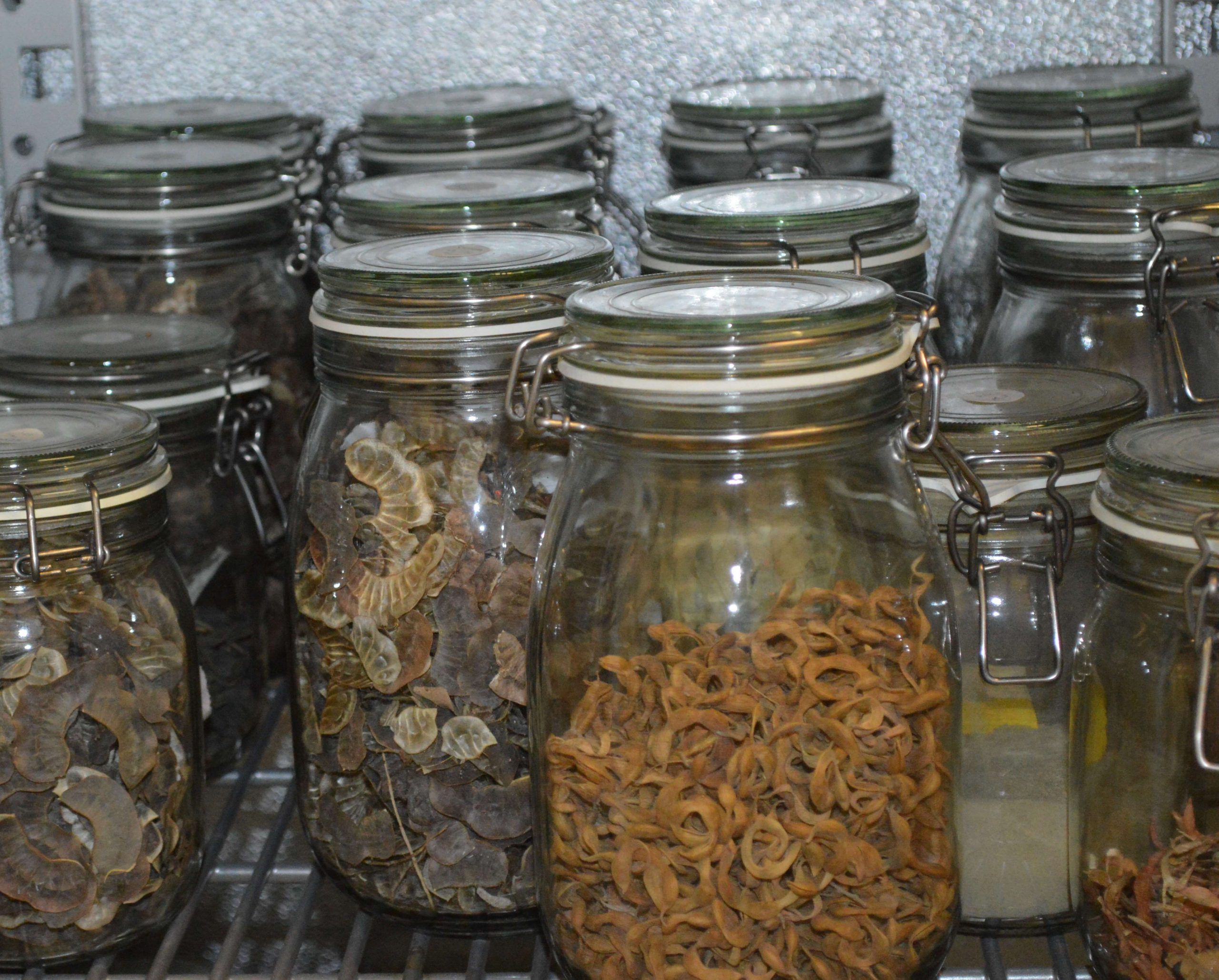What is the Quranic Botanic Garden’s herbarium?
The Quranic Botanic Garden’s herbarium is a unit where dried plant samples are preserved, by being stored and indexed based on scientific information. The plants are arranged using a classification system and placed inside special cupboards.
The Herbarium is home to about 3000 plant samples that have been mentioned in the Holy Qur’an and the hadiths, along with samples of plants found in Qatar.
What purpose does the herbarium serve?
The Herbarium is used to preserve plants or some of their parts by storing and conserving the specimens to allow future generations to identify plants, study biodiversity, and make use of the samples to support conservation and sustainable development efforts.
Each plant sample in the herbarium has an informative and unique heritage value, providing information on the plant’s original habitat and flowering dates to enable specialist researchers, students, ecologists, botanists, geographers and historians to identify plants and document their names. Preserved plant samples can also be used to obtain DNA samples and to validate scientific observations.
Herbarium samples
The sample may be a whole plant or part of a plant in the case of large trees or shrubs. The parts are collected from different areas of the plant, compressed and dried in the conservation center, to preserve their original color and characteristics. The plants are then stored in a refrigerator (at subzero temperature) for at least 24 hours to eliminate insects that may endanger the collected samples.
The samples are then affixed to papers with special specifications. These herbal samples are also indexed in a database that contains their scientific and local names, taxonomic and environmental information and the geographical coordinates related to their natural habitats and environment.
The samples feature information such as the collection date and the name of the person who collected it among other information such as an explanation of the plant’s characteristics which cannot be easily obtained elsewhere (eg tree height, colors and aromas lost when pressing…) because these details help identify the sample later. The herbarium samples are then arranged in airtight cupboards according to the used classification systems.
Herbarium role
● Documenting the names of plants by collecting available plant samples, either from their original habitat in Qatar or from their natural environments around the world
● Helping preserve native plants from extinction
● Documenting the different stages of plant growth by taking samples at different times
● Preparing a digital library of samples by scanning them
● Creating a database of samples and plants’ location around the world
● Exchanging samples with national and international bodies
● Providing educational programs related to plants, botanical terminology and plant physiological processes
● Submitting samples for display at the Botanic Garden Information Center and participating in educational and awareness activities across parks, universities and natural reserves.
Digital herbarium
The Quranic Botanical Garden is committed to making these herbal specimens accessible to botanists and experts around the world so that they can make use of them in research projects and studies particularly in the fields of biodiversity, conservation and sustainable development. To this end, the Quranic Botanic Garden’s Herbarium has begun scanning and digitizing plant samples collected from wild or cultivated areas to include them along with their labels in a digital electronic library





